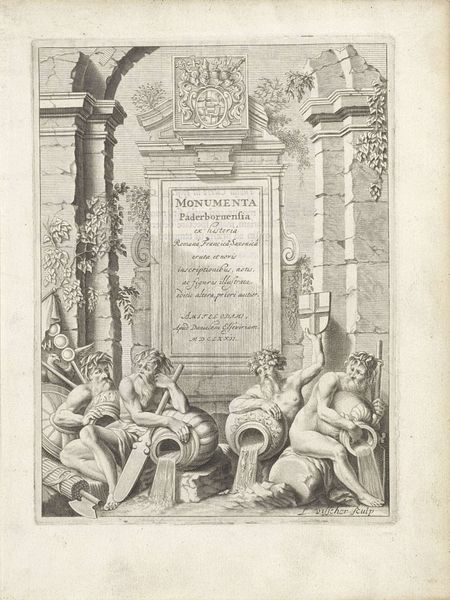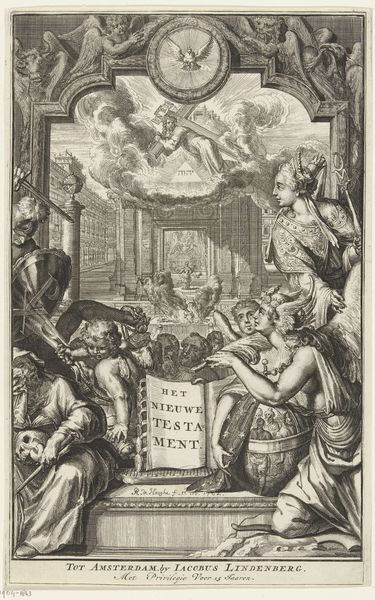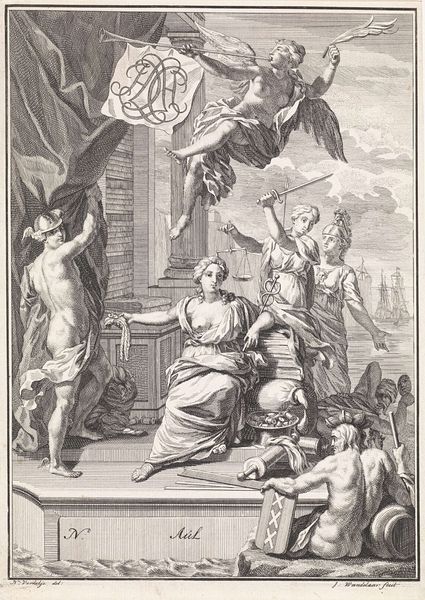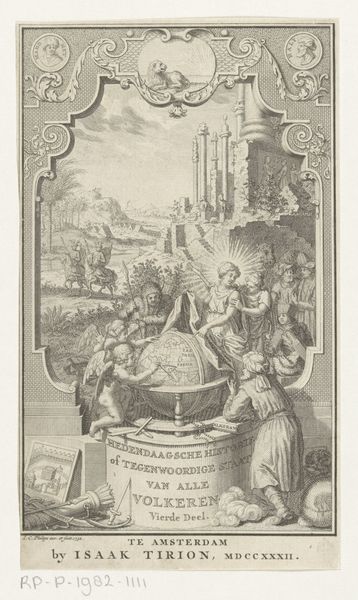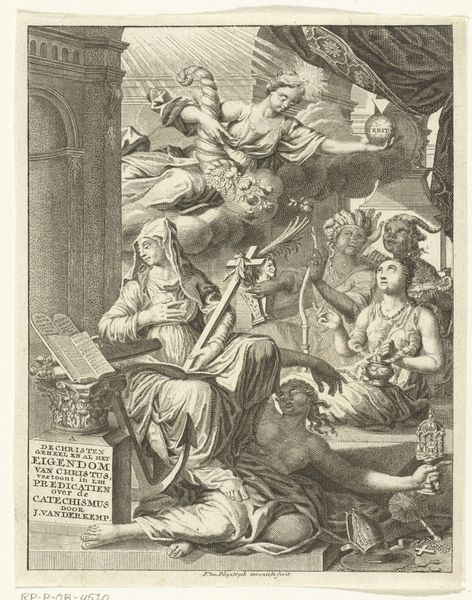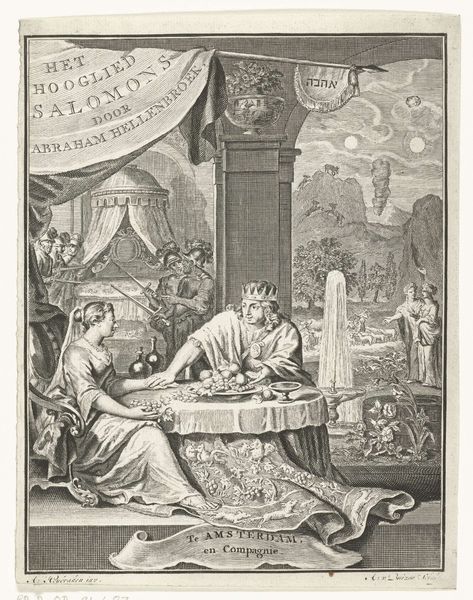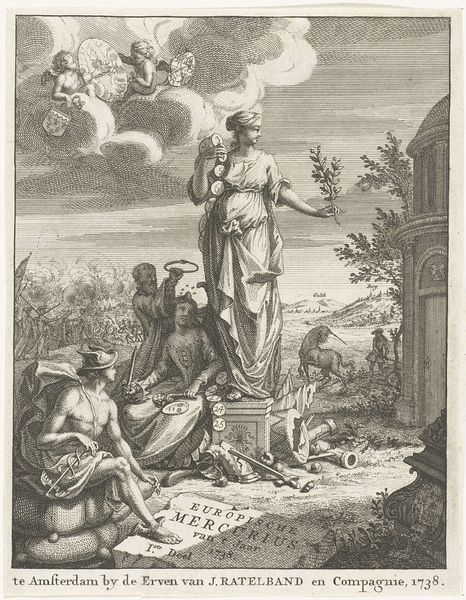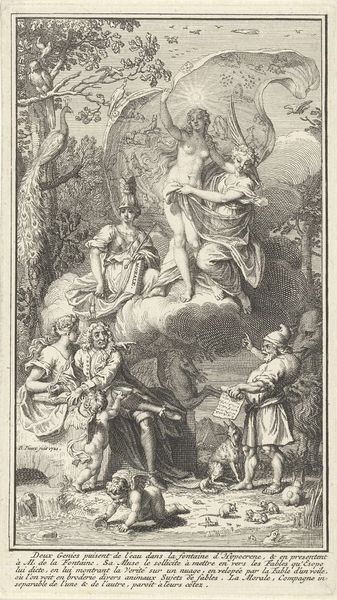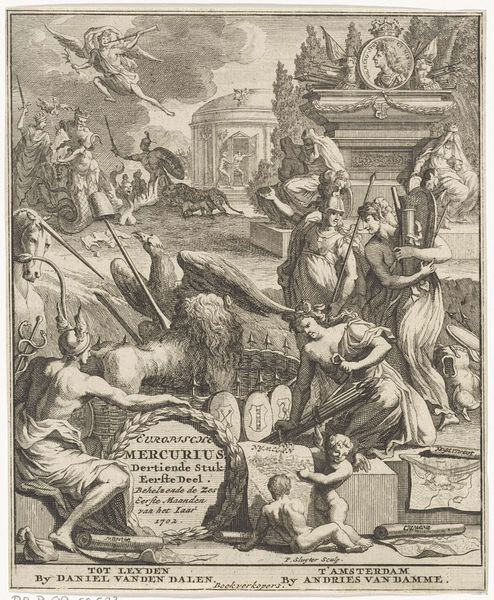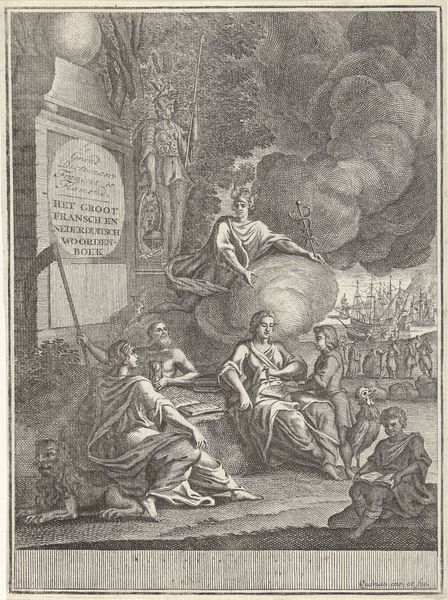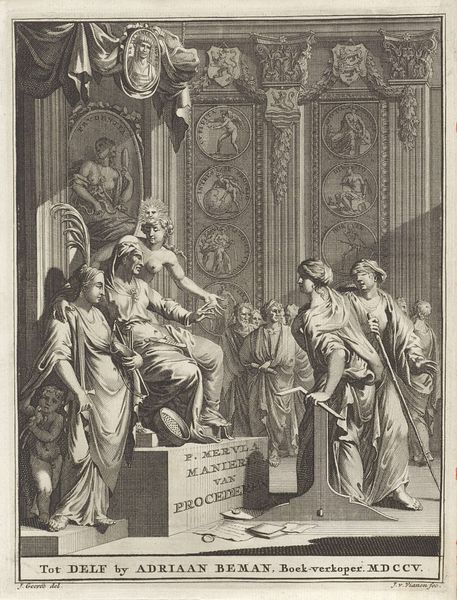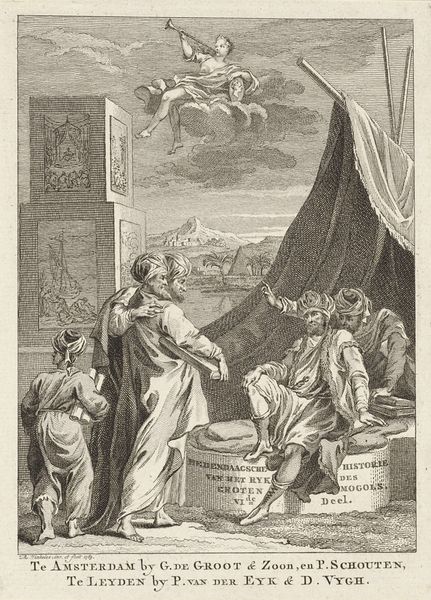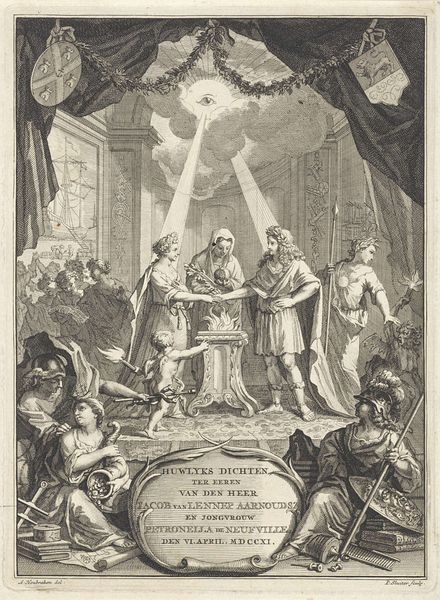
print, engraving
#
allegory
#
baroque
# print
#
pen illustration
#
old engraving style
#
cityscape
#
genre-painting
#
history-painting
#
engraving
Dimensions: height mm, width mm
Copyright: Rijks Museum: Open Domain
Curator: This engraving, titled "Volken van verschillende continenten" which translates to "Peoples of different continents", was created in 1729 by Jan Caspar Philips. It's currently housed here at the Rijksmuseum. The piece is baroque in style, rendered in a highly detailed print, almost like an old pen illustration, a common artistic method for broad distribution during this era. Editor: My first impression is...wow, what a whirlwind of imagery! Angels wrestling on clouds, scholarly figures looking on... It feels like the visual equivalent of someone trying to explain the entire world in one breath. Curator: Precisely! It functions as an allegory. The composition reveals complex relationships of power and representation during a period of intense global exchange. Notice how different continents are personified and placed within a hierarchy around that central inscription. Editor: The hierarchy is inescapable. The classical figures and architecture loom over everyone. What do you make of the objects scattered at the base? A fan, maps, rolled documents... they feel almost discarded. Curator: They are markers of commerce and knowledge. Think of the Dutch East India Company during this time; mapping and recording territories were crucial to economic expansion. These elements aren't neutral; they actively shape how these "volken," these peoples, were perceived and categorized. It’s worth thinking about the power of categorization itself. Editor: It feels like it wants to show that Europe and the "new world" are at the heart of understanding our society at that time. Does this then exclude the orient cultures that are visible in this print? Is this showing the power dynamic of Amsterdam being the heart of world knowledge at the time and therefore the people should feel subservient to Amsterdam. Is there possibly an analogy that we as an empire are carrying the world, "atlas", so we want to represent us in this picture carrying our responsibility of this weight? Curator: Your observation resonates. This imagery reflects not only encounters, but also hierarchies and claims to global influence that legitimize colonial authority. Editor: Looking at it again, it feels almost suffocating. So much visual information packed into one space. Curator: I agree. And it underscores the density of historical, political, and social issues condensed in this one relatively small engraving. It speaks volumes about how the world, and its peoples, were understood – or misunderstood – during the early 18th century. Editor: Well, I'll certainly see baroque engravings a little differently from now on. Talk about unpacking a complicated legacy. Curator: Indeed. And hopefully inspiring more questions than answers as we consider whose perspectives are foregrounded – and whose are omitted – from the narrative.
Comments
No comments
Be the first to comment and join the conversation on the ultimate creative platform.

